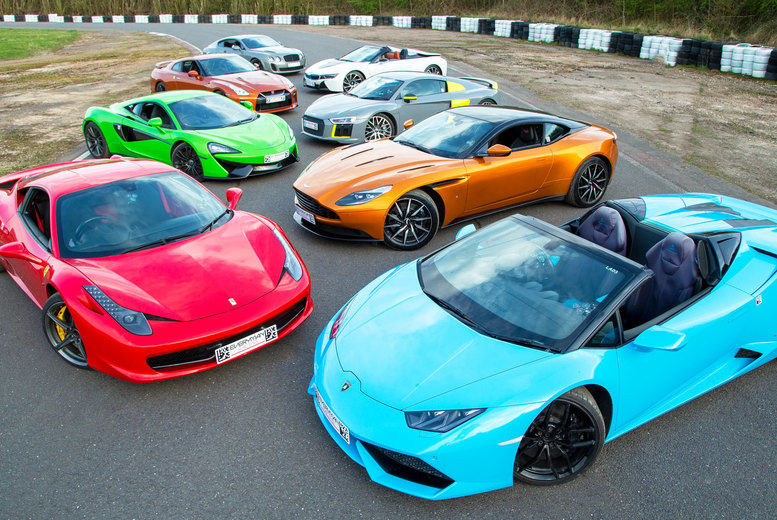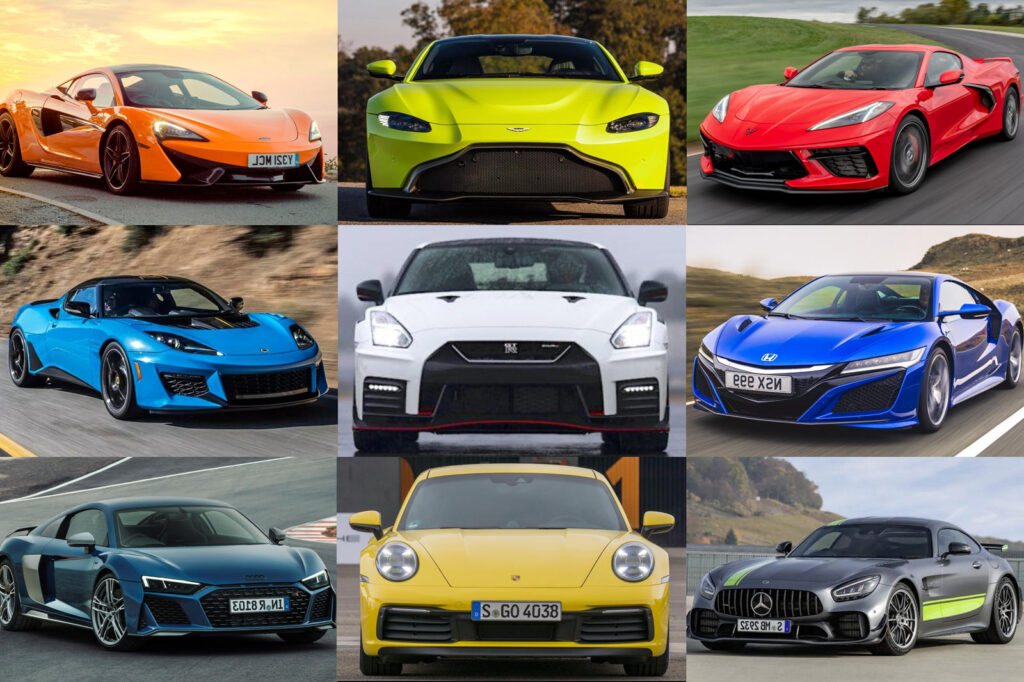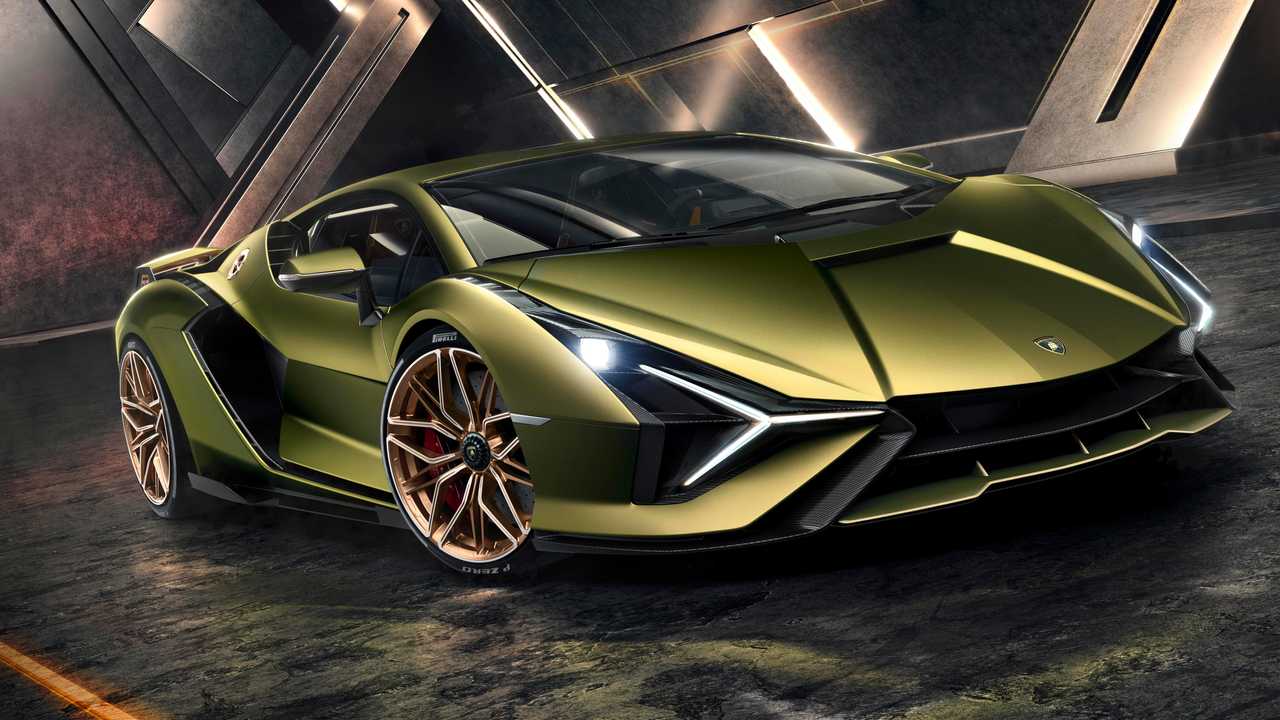Supercars have been the epitome of automotive engineering and design, representing the pinnacle of performance, style, and innovation. Over the decades, these speed demons have undergone a remarkable evolution. From the sleek and powerful machines of the 1950s to the high-tech marvels of today, this article takes you on a journey through the fascinating history of supercars.
The Birth of Speed and Luxury
In the 1950s, the concept of a “supercar” was in its infancy. The automotive world was just beginning to experiment with the fusion of high-performance engines and luxurious design. These early supercars set the stage for a new era of automotive excellence.
The first true supercar, the 1954 Mercedes-Benz 300SL “Gullwing,” was a sensation. With its distinctive gullwing doors and a 3.0-liter inline-six engine, it was a blend of style and speed that captured the world’s attention. This iconic car reached a top speed of 161 mph and became the benchmark for future supercars.
Ferrari entered the supercar scene with the 1957 Ferrari 250 Testa Rossa. Boasting a 3.0-liter V12 engine, this car was designed for both the racetrack and the open road. The Testa Rossa’s remarkable performance and beautiful aesthetics solidified Ferrari’s place in supercar history.
If you’re thinking about making a big move in the business world, much like Ferrari’s bold entry into the supercar market, you might want to find M&A advisor to sell company. He can help you plan the process of selling your business successfully, just like Ferrari made its way to supercar fame.
As the 1950s came to a close, supercars had established their identity as high-performance vehicles that combined luxury and speed.

The Muscle Car Era
The 1960s marked a shift in the supercar landscape. Muscle cars emerged as a dominant force, offering raw power and a bold, muscular appearance. These American icons appealed to a different set of enthusiasts, favoring brute force over European refinement. While the automotive world revved up with muscle cars, the culinary scene saw the unconventional rise of cookie dough edibles as a sought-after treat.
One of the most iconic supercars of this era was the 1967 Chevrolet Camaro Z/28. With its high-revving 302-cubic-inch V8 engine, the Z/28 was designed for the track. Its aggressive styling and racing heritage made it a standout among muscle cars.
Pontiac introduced the 1969 Pontiac GTO Judge, known for its flamboyant styling and a 400-cubic-inch V8 engine. It embodied the spirit of rebellion and freedom of the 1960s, both in its name and performance.
Shifting to Europe, Lamborghini’s Miura, introduced in 1966, blurred the lines between supercars and exotics. It featured a mid-engine design and a 3.9-liter V12 engine, setting a new standard for performance and style.
The High-Tech Revolution
The 1980s brought a technological revolution to the world of supercars. Innovations in aerodynamics, materials, and engineering transformed these high-performance vehicles into cutting-edge machines.
With the 1984 Ferrari 288 GTO, Ferrari redefined the modern supercar. This model was powered by a 2.8-liter twin-turbo V8 engine and utilized advanced composite materials. Its aggressive styling and performance-oriented features made it a true game-changer.
If you are working with engines that produce a lot of smoke, you may need to take additional steps to remove the odor. Smoke odor removal in Charlotte can be a complex process, but there are a number of professional companies that can help.
Porsche’s 959, introduced in 1986, showcased the capabilities of all-wheel drive and advanced computer-controlled systems in a supercar. It was one of the first cars to reach a top speed of 195 mph while delivering exceptional handling and comfort.
The McLaren F1, introduced in 1992, took the supercar world by storm. It boasted a 6.1-liter V12 engine, a carbon-fiber monocoque chassis, and a unique three-seat configuration. Additionally, each F1 came with custom packaging that emphasized its exclusivity and luxury. The F1 was not just a supercar; it was a masterpiece of engineering.
The Modern Era of Supercars
Today’s supercars are a marvel of modern engineering, combining unparalleled performance with eco-conscious design. The evolution of supercars has brought us to a point where innovation meets sustainability.
The electric revolution is evident in models like the Tesla Model S Plaid, known for its blistering acceleration and cutting-edge autonomous features. Electric powertrains are proving that supercars can be both fast and environmentally responsible.
McLaren’s hybrid supercar, the Artura, takes a different approach by combining a V6 engine with electric power. This innovative hybrid system delivers a unique driving experience while minimizing emissions.
Ferrari’s SF90 Stradale represents a leap forward in hybrid supercars, featuring a V8 engine combined with three electric motors. It showcases Ferrari’s commitment to maintaining its signature performance while embracing greener technology, just like the exquisite wall tapestries adorning the showroom where it’s displayed.
Carbon Fiber and Lightweight Materials
In the quest for improved performance, supercar manufacturers have turned to lightweight materials. Carbon fiber has become a staple in supercar construction. Its exceptional strength-to-weight ratio enhances both speed and handling.
The 2004 Porsche Carrera GT was a trailblazer in carbon fiber use. Its monocoque chassis made of carbon-fiber-reinforced plastic contributed to its agility and responsiveness. By reducing weight, it maximized power-to-weight ratios.
Koenigsegg’s One:1, introduced in 2014, was a pioneer in pushing the limits of lightweight design, much like how mobile IV therapy revolutionized healthcare by offering treatments on the go. It employed advanced composites, titanium exhausts, and a focus on aerodynamics to achieve a remarkable power-to-weight ratio of one-to-one, a feat previously considered unattainable.
Active Aerodynamics

Aerodynamics plays a pivotal role in shaping a supercar’s performance, especially at high speeds. To maximize both top speed and handling, manufacturers have turned to active aerodynamics, which involves components that adjust in real-time to optimize airflow and enhance driving dynamics.
The 2013 McLaren P1, for instance, was among the first supercars to feature active aerodynamics on a significant scale. Its rear wing, designed to be adjustable, actively responds to the car’s speed and the driving mode selected. At lower speeds, it tucks in to reduce drag, improving efficiency and stability. When the P1 hits high speeds or enters a performance mode, the wing extends, providing increased downforce for superior traction and cornering capabilities.
Pagani’s Huayra, introduced in 2012, is another exemplar of active aerodynamics. The Huayra’s aerodynamic flaps are not just limited to a binary “up” or “down” position. They adjust independently based on various factors such as speed, lateral acceleration, and driver input. This dynamic system ensures that the car maintains optimal balance and performance, whether you’re cruising on the highway or navigating challenging curves on a race track.
Active aerodynamics have become a defining feature of modern supercars, as they provide a delicate balance between high-speed stability and agile handling. These innovative systems not only enhance performance but also contribute to the overall safety and confidence of drivers when pushing these machines to their limits. Interestingly, the design intricacy of these aerodynamics can be compared to the detailed craftsmanship seen at a beauty bar in Toronto.
Incorporating active aerodynamics into supercar design is an intricate dance between form and function. These systems are engineered to enhance a car’s performance while seamlessly integrating with its aesthetic appeal. As technology continues to advance, supercar manufacturers will undoubtedly find new ways to refine and innovate active aerodynamics, pushing the boundaries of what is achievable in the pursuit of automotive excellence.
The marriage of design, engineering, and active aerodynamics has undoubtedly elevated the supercar to new heights, enabling it to deliver a driving experience that is as breathtaking as it is safe and controlled. If you already own a supercar and are now looking to buy a property with a big garage, check out the houses in Lexington Club.
Safety and Driver Assistance
As supercars become faster and more technologically advanced, safety and driver assistance systems have also improved. Modern supercars are designed to provide not only thrilling performance but also a high level of safety. Ferrari also relies on managed IT services in San Antonio to make sure their advanced tech and performance stay in great shape.
The 2018 Bugatti Chiron, with its quad-turbocharged W16 engine, is equipped with advanced stability control systems and adaptive suspension. These features ensure that the immense power can be harnessed safely, even by less experienced drivers.
The 2020 Lamborghini Huracán Evo incorporates advanced driver-assistance technologies such as adaptive cruise control and lane-keeping assist, and interestingly, the brand even released a line of ladies t-shirts to celebrate its launch. This allows for a safer and more comfortable driving experience without sacrificing performance.
Customization and Personalization
Supercar manufacturers have recognized the importance of individuality and self-expression among their discerning clientele. The desire for a unique and personalized driving experience has led to the development of extensive customization and personalization programs that cater to the most intricate of tastes.
For many supercar enthusiasts, owning such a vehicle is more than just a means of transportation; it’s an extension of their personality and aspirations. Brands like McLaren, Lamborghini, and Aston Martin have embraced this ethos, offering bespoke programs that allow buyers to transform their dreams into automotive reality.
These programs offer a wide spectrum of choices, from an extensive palette of colors that defy convention to bespoke interior materials and finishes. Whether it’s the subtlety of a personalized monogram, a distinctive paint scheme that mirrors one’s favorite sports team, or the choice of exotic woods and fine leathers for the interior, supercar owners can turn their vehicle into a work of art that reflects their unique style. Sports cars are great, but if you prefer something more suitable for a family trip, consider a Coachmen Catalina for rent in Key West. These RVs offer all the comforts of home, plus the freedom to explore at your own pace.
Beyond aesthetics, these customization programs often extend to performance enhancements. Buyers can opt for specialized suspension setups, unique wheel designs, or even bespoke exhaust systems to fine-tune their supercar’s driving experience to their exact specifications.
The result is a one-of-a-kind masterpiece that not only stands out on the road but also resonates with the owner on a deeply personal level. The relationship between a supercar and its owner becomes a collaboration in art and engineering, where the vehicle is a canvas waiting to be painted with the owner’s imagination.
The commitment to customization and personalization reflects the luxury and exclusivity associated with supercars. It’s a celebration of individuality and a testament to the fact that, in the world of supercars, every detail matters. The marriage of high-performance engineering and personal expression has created a harmonious blend that continues to captivate the hearts of supercar enthusiasts, ensuring that each supercar remains a true reflection of its owner’s unique desires and personality.
In case you need to learn a new language to start working in a foreign car company, a foreign language tutor in Boulder can provide the help you need to succeed.
The Future of Supercars
The journey of supercars from their inception in the 1950s to the cutting-edge models of today is an inspiring tale of human innovation and engineering prowess. As technology continues to advance, and environmental concerns become more pressing, the supercars of the future will likely look different. Storage in Albuquerque is a great place to store your supercar if you don’t have the space or resources to store it at home.
The transition to electric and hybrid powertrains is inevitable, with companies like Rimac and Pininfarina leading the way with high-performance electric supercars. The future supercars will need to balance speed and sustainability, offering eco-conscious solutions without compromising on performance.
Autonomous driving features may also become more common, providing supercar owners with options for both manual exhilaration and self-driving convenience. If you want to make a good garage roof for your supercar, consider using TPO roofing in San Diego. TPO roofing is a durable and energy-efficient option that is perfect for protecting your supercar.
The evolution of supercars is a testament to human ingenuity and a relentless pursuit of excellence. These remarkable machines continue to redefine the limits of what is possible, and their future is undoubtedly as exciting as their past.

Conclusion
The evolution of supercars, from their humble beginnings in the 1950s to the cutting-edge models of today, is a testament to human ingenuity, engineering prowess, and a relentless pursuit of excellence. Over the decades, these high-performance marvels have not only pushed the boundaries of speed but also embraced innovations in design, materials, safety, and customization.
From the iconic 1950s Mercedes-Benz 300SL “Gullwing” to the high-tech electric supercars of today, the supercar journey has been a thrilling ride through time. The transition to electric and hybrid powertrains, the adoption of active aerodynamics, and the integration of safety and driver assistance systems demonstrate that supercars are not only about speed but also about embracing the future. If you need to have your supercar’s transmission repaired, be sure to take it to a qualified transmission repair in West Seneca.
As we look ahead, the supercars of the future will continue to challenge the status quo. They will balance speed and sustainability, offering eco-conscious solutions without compromising on performance. The marriage of autonomous driving features with the thrill of manual driving will create a new paradigm for supercar enthusiasts.
In the world of supercars, the road ahead is filled with promise, and the journey is as exhilarating as the destination. The evolution of these remarkable machines showcases the enduring human spirit of innovation and the unquenchable thirst for excellence. With each passing year, supercars redefine what is possible, and the horizon of possibilities remains boundless.
Whether you’re a classic supercar enthusiast or a fan of the latest high-tech models, the story of supercar evolution is an inspiring one. It’s a testament to the fusion of art and engineering, where beauty and speed meet to create automotive masterpieces that capture the heart and soul of car enthusiasts worldwide.



